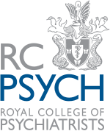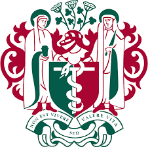Have you ever wondered why we dream or how certain phases of sleep contribute to our well-being? Sleep consists of different stages, and each stage plays an important role in supporting physical and mental health. REM (Rapid Eye Movement) sleep is particularly important due to its distinctive features and significant impact on overall well-being. This article explores REM sleep, focusing on its role in the sleep cycle and its significance in memory consolidation, emotional regulation and overall well-being.
What is REM sleep?
REM (Rapid Eye Movement) sleep is a distinct stage of the sleep cycle characterised by rapid, jerky movements of the eyes, vivid dreaming, and heightened brain activity. During this phase, the brain exhibits patterns of activity similar to wakefulness, playing a vital role in emotional regulation, memory processing, and overall cognitive health.
REM sleep was discovered in 1953 by Dr. Nathaniel Kleitman and Dr. Eugene Aserinsky. They observed that rapid and symmetrical eye movements accompanied certain periods of sleep. These movements were linked to a specific pattern of brain activity, identified through electroencephalogram (EEG) readings, which resembled the low-amplitude, irregular frequency signals seen during wakefulness.
Physiologically, REM sleep is marked by several unique changes. Muscle atonia of most skeletal muscles occurs to prevent individuals from physically acting out their dreams. Meanwhile, heart rate and breathing patterns become irregular, reflecting heightened autonomic nervous system activity. These changes are part of the body’s response to the increased cortical activity. Dreams in REM sleep are often vivid, immersive, and bizarre. This stage is integral to process emotions and resolve psychological conflicts, which contributes to mental health and emotional resilience.
REM sleep and the sleep cycle
A typical sleep cycle includes non-REM stages (N1, N2, and N3) followed by REM sleep. The first REM phase occurs approximately 90 minutes after falling asleep and lasts for about 10 minutes. As the night progresses, subsequent REM stages lengthen, with the final REM phase lasting up to an hour. This pattern of alternating between non-REM and REM sleep repeats several times throughout the night, ensuring that both the body and mind receive the necessary time for recovery.
While non-REM stages are crucial for physical restoration, REM sleep focuses on cognitive and emotional functions. As the body undergoes physical healing during non-REM sleep, the brain continues its essential work during REM sleep. Together, these stages create an effective sleep architecture that supports overall health.
The physiology of REM sleep
REM sleep involves a complex interaction of neurotransmitters and neural circuits. Acetylcholine promotes REM sleep by increasing brain activity, particularly in areas associated with memory, learning, and processing emotions. At the same time, a decrease in norepinephrine levels causes muscle atonia. This muscle immobility during REM sleep is a crucial mechanism that prevents individuals from physically acting out their dreams, ensuring that the body remains still while the brain is highly active.
The heightened activity during REM sleep affects various brain regions, including the limbic system, which regulates emotions, and the prefrontal cortex, which governs complex thought processes. During REM sleep, the activity in the prefrontal cortex is suppressed, which is why dreams during REM sleep often lack logical coherence. The balance of activation and suppression across these brain regions allows REM sleep to perform its various functions.
REM sleep and dream formation
The connection between REM sleep and dreaming has been a subject of scientific inquiry, leading to several theories about the purpose of dreaming. One theory suggests that dreaming during REM sleep plays a critical role in memory consolidation. During this phase, the brain processes and organises information acquired throughout the day, reinforcing important memories while discarding irrelevant details. This mechanism helps to improve cognitive functions like problem-solving, learning, and adaptability.
Another important function of dreaming is emotional processing. REM dreams allow the brain to work through emotions and experiences, particularly those that are distressing or unresolved. By doing so, the mind can reduce emotional intensity and integrate these experiences into the broader context of one’s mental framework.
The content of dreams during REM sleep often reflects personal experiences, subconscious thoughts, and emotional states. Emotional themes, particularly those tied to anxiety, loss, or anticipation, are common in REM dreams. This reflective nature of dreaming highlights its role in emotional health and underscores its therapeutic potential.
Why is REM sleep important?
REM sleep plays a critical role in several aspects of health and well-being, including enhancing memory consolidation, emotional regulation, and physical health.
Memory consolidation and learning: REM sleep strengthens neural connections, enabling the brain to retain new information and skills. It is particularly important for procedural memory, which involves learning tasks that require motor skills.
Emotional processing: During REM sleep, the brain processes and regulates emotions, helping individuals manage stress and anxiety. This function is essential for maintaining emotional balance and mental health.
Physical health: REM sleep contributes to cellular repair and immune function, promoting overall physical recovery. Insufficient REM sleep may impair the body’s ability to fight infections and recover from illnesses.
Mental health: Disruptions in REM sleep have been linked to conditions such as depression and post-traumatic stress disorder (PTSD). By promoting emotional resilience, REM sleep acts as a protective factor against mental health challenges.
How much REM sleep do you need?
The amount of REM sleep required varies by age and individual factors. Adults typically spend 20-25% of their sleep in the REM phase, which amounts to about 90-120 minutes per night. However, this proportion varies with age.
REM sleep needs by age
Infants and young children experience significantly more REM sleep than adults, with up to 50% of their total sleep spent in this stage. This high proportion reflects the critical role of REM sleep in brain development and learning during early life, supporting memory consolidation and neural growth. REM sleep is also essential for forming new connections and processing emotions. As children grow, the amount of REM sleep decreases, but it continues to play a vital role in emotional regulation and cognitive function. Despite requiring less overall sleep, older adults still benefit from adequate REM sleep, as it helps preserve memory, enhance learning, and maintain mood stability.
Factors affecting REM sleep needs
Individual variations in REM sleep requirements can be influenced by factors such as genetics, stress levels, and health conditions. Stress and illness often reduce REM sleep duration, while certain medications, particularly antidepressants, can suppress REM sleep. Chronic sleep disruptions like insomnia or sleep apnoea can also affect REM sleep patterns.
Lifestyle choices like caffeine or alcohol consumption can disrupt the natural sleep cycle and impact the quality and duration of REM sleep. Understanding these factors can help individuals to identify and address barriers to achieving sufficient REM sleep, ultimately supporting better cognitive function and overall health.
How to improve REM sleep quality?
Optimising REM sleep involves adopting strategies that enhance overall sleep quality and create conditions conducive to deeper, restorative sleep. Here are some key recommendations:
Maintain a consistent sleep schedule: Going to bed when you feel sleepy and waking up at the same time every day, even on weekends, helps to regulate the body’s internal clock. A stable routine improves the overall quality of sleep, ensuring adequate time for REM sleep.
Practice stress management techniques: High-stress levels can significantly impact the ability to reach REM sleep. Incorporating practices like meditation, yoga, and progressive muscle relaxation into your daily routine promotes a calm mind, making it easier to transition into REM sleep.
Reduce blue light exposure: Prolonged screen time before bed from devices such as smartphones, tablets, and computers can interfere with the body’s production of melatonin. Using blue light-blocking glasses, enabling night mode on devices, or avoiding screens an hour before bedtime can improve sleep quality.
Create a comfortable sleep environment: A sleep-friendly bedroom environment is important for uninterrupted sleep. Keep the room dark with blackout curtains, maintain a quiet atmosphere with earplugs or white noise machines, and set a cool temperature to prevent discomfort.
Establish a relaxing bedtime routine: Develop a pre-sleep routine that signals your body that it’s time to wind down. This can include light reading, listening to calming music, taking a warm bath, or practising mindfulness exercises.
By implementing these strategies, you can create an environment and routine that promotes better sleep hygiene, supports the natural sleep cycle, and enhances the duration and quality of REM sleep.
Are you fulfilling your REM sleep needs?
Recognising the importance of REM sleep is the first step toward improving sleep health. By understanding its role in memory, emotional regulation, and physical well-being, individuals can take proactive steps to optimise their sleep patterns.
If you’re struggling to achieve restful sleep, consulting a sleep specialist can provide effective and personalised solutions tailored to your needs. Dr Dipesh Mistry is an experienced sleep specialist in the UK who helps people overcome their sleep problems. Please get in touch if you have any further questions or to see us.
Summary
Here is a quick summary to help you digest the key points:
- Rapid Eye Movement (REM) sleep is vital for your memory and cognitive health. It positively contributes to emotional and mental wellbeing.
- REM sleep plays a crucial role in dreams and helps regulate emotional processing.
- It’s important to get adequate sleep every night to ensure you get enough REM sleep.
- You can improve your REM sleep by reducing blue light exposure before bed, improving sleep hygiene and maintaining a consistent sleep schedule.
If you are having trouble sleeping, it may be wise to consult a sleep specialist to rule out any medical causes.










